Blog • Published on:January 8, 2025 | Updated on:February 5, 2025 • 13 Min
Top 10 Wealthiest Cities in America in 2025
America is home to some of the world’s most affluent cities, each with its own unique charm, industries, and wealthy enclaves. Consistently ranked among the richest countries in the world, the United States continues to attract wealth and opportunity on a global scale.
Within the country, major cities like New York, Los Angeles, and San Francisco stand out as centers of innovation, investment, and luxury living.
This article takes a deep dive into the top 10 richest US cities, ranking them based on net worth, millionaire density, and real estate values. Along the way, you’ll discover the factors driving their prosperity and what makes them magnets for the ultra-wealthy.
Understanding Wealth Distribution in American Cities
Wealth in the United States is highly concentrated among a small percentage of the population, with metropolitan areas driving much of this disparity. According to data from the Federal Reserve's Distributional Financial Accounts, the top 10% of earners own nearly 65% of the nation’s total wealth. Conversely, the bottom 50% of earners hold only 2.5% of total wealth, underscoring significant economic inequality. This concentration is most evident in urban areas with thriving industries and high net-worth populations.
Wealth Metrics Used in Ranking
The rankings of the wealthiest U.S. cities are based on several key indicators:
- Total Private Wealth: The aggregate net worth of all individuals within a city.
- Millionaire Density: The number of millionaires per capita, indicating the concentration of high-net-worth individuals.
- Real Estate Values: Average property values, reflecting the city's economic status and desirability.
- Key Industries: Dominant sectors contributing to the city's economy, such as finance in New York or technology in San Francisco.
These metrics provide a comprehensive view of economic health and wealth distribution across urban centers.
The 10 Richest Cities in America by Net Worth
Each city listed below represents a unique economic and cultural center, contributing significantly to America’s wealth, millionaire growth and global influence.
What Makes These Cities the Wealthiest in America?
New York City
New York City is the wealth capital of the United States and globally, with $4 trillion in private assets. The city has great access to financial services. It is also home to Wall Street. This makes it a global financial center.
- Wealthy Neighborhoods: Tribeca, Upper East Side, and Hudson Yards feature ultra-luxurious residences and are home to numerous billionaires. Hudson Yards, in particular, has transformed into a great spot for high-end commercial and residential properties.
- Key Industry: The financial services sector, generating over $1.2 trillion annually, is complemented by booming industries in media, technology, and fashion. NYC is also a key player in the art world, hosting auction houses like Sotheby’s and Christie's.
- Notable Statistics: The city hosts 340,000 millionaires, more than any other U.S. city. Its GDP exceeds $2 trillion, making it one of the largest city economies globally.
- Real Estate Insights: Luxury apartments in Manhattan can sell for over $50 million, with Billionaires’ Row commanding some of the highest prices in the world.
San Francisco Bay Area
The San Francisco Bay Area, including Silicon Valley, holds $2.7 trillion in private wealth, driven by the tech revolution. With over 68 billionaires, it’s a breeding ground for startups and innovation.
- Wealthy Neighborhoods: Palo Alto, home to many tech billionaires, and Pacific Heights, featuring historic mansions and modern luxury homes, dominate the area’s luxury real estate market.
- Key Industry: The tech sector is responsible for60% of the region’s wealth, with companies like Apple, Google, and Meta headquartered here. Venture capital firms also drive significant investment.
- Notable Statistics: Palo Alto is home to some of the world’s most expensive real estate, with average home prices exceeding $3 million.
- Real Estate Insights: Atherton, one of the most exclusive neighborhoods, boasts average home prices above $7 million, making it one of the wealthiest zip codes in the U.S.
Los Angeles
Los Angeles combines wealth from Hollywood with growing tech and real estate sectors, resulting in $1.5 trillion in private wealth.
- Wealthy Neighborhoods: Beverly Hills, Bel Air, and Malibu are synonymous with opulence, hosting estates worth $20 million or more. Malibu’s oceanfront properties remain some of the most coveted globally.
- Key Industry: The entertainment industry generates $72 billion annually, with thriving sectors in music, television, and film production. Tech companies like Snap Inc. and SpaceX also contribute to the city’s economy.
- Notable Statistics: LA is home to 212,000 millionaires and 43 billionaires. The entertainment industry employs over 500,000 people, contributing significantly to its economic diversity.
- Real Estate Insights: Luxury estates in Bel Air and Holmby Hills attract buyers worldwide, often exceeding 10,000 square feet in size and featuring world-class amenities.
Chicago
With a GDP of $750 billion, Chicago stands as the economic anchor of the Midwest, offering a mix of old-money wealth and modern innovation.
- Wealthy Neighborhoods: Gold Coast and Lincoln Park feature historic brownstones and lakefront mansions. The Gold Coast remains a symbol of affluence, dating back to the early 20th century.
- Key Industry: Chicago’s diversified economy includes finance, healthcare, logistics, and manufacturing. The Chicago Mercantile Exchange plays a key role in global commodities trading.
- Notable Statistics: The city is home to 124,000 millionaires. Chicago’s O’Hare Airport serves as a critical area for global commerce.
- Real Estate Insights: Luxury condos in neighborhoods like Streeterville command prices upwards of $2 million, offering stunning views of Lake Michigan.
Houston
Houston’s economy is deeply rooted in the energy industry, with $975 billion in private wealth making it a key global player.
- Wealthy Neighborhoods: River Oaks and Memorial showcase sprawling estates with prices often exceeding $10 million. River Oaks Country Club is a perfect location for Houston’s elite.
- Key Industry: Energy accounts for 85% of local wealth, with significant contributions from healthcare and aerospace sectors.
- Notable Statistics: Houston’s Texas Medical Center is the largest medical complex globally, driving advancements in healthcare and attracting top-tier professionals.
- Real Estate Insights: Luxury developments include gated communities with expansive properties tailored to affluent international buyers.
Washington D.C.
With $900 billion in private wealth, Washington D.C. thrives as the epicenter of political and legal influence in the U.S.
- Wealthy Neighborhoods: Georgetown, with its cobblestone streets and historic charm, and Kalorama, home to diplomats and political leaders, reflect the city’s prestige.
- Key Industry: Government contracting, lobbying, and international diplomacy dominate, with legal and consulting firms also contributing significantly.
- Notable Statistics: Over 110,000 millionaire householdsreside in the D.C. area, which also includes affluent suburbs like McLean, VA.
- Real Estate Insights: Properties in Kalorama often exceed $5 million, with demand driven by high-profile political and international figures.
Boston
Boston thrives on its world-class educational institutions and biotech industry, resulting in $850 billion in private wealth.
- Wealthy Neighborhoods: Back Bay and Beacon Hill combine historic architecture with high-end living. Beacon Hill remains one of the most picturesque neighborhoods in the U.S.
- Key Industry: Higher education (Harvard and MIT) and biotechnology drive innovation, with the Boston area hosting $300 billion in annual economic impact.
- Notable Statistics: The city has one of the highest densities of billionaires per capita in the U.S.
- Real Estate Insights: Luxury developments in the Seaport District cater to young professionals and investors seeking modern waterfront living.
Seattle
Seattle’s $800 billion private wealth stems from its tech-driven economy, led by companies like Amazon and Microsoft.
- Wealthy Neighborhoods: Medina, home to Bill Gates, and Queen Anne, known for stunning views of the Puget Sound, are prime residential areas.
- Key Industry: Technology and aerospace dominate, with significant contributions from e-commerce and cloud computing.
- Notable Statistics: Over 200,000 tech workersreside in Seattle, earning some of the highest salaries in the U.S.
- Real Estate Insights: Waterfront properties in Medina often fetch prices above $10 million, offering privacy and proximity to Seattle’s tech hubs.
Miami
Miami attracts global investors and high-net-worth individuals, with $750 billion in private wealth.
- Wealthy Neighborhoods: Coral Gables, Fisher Island, and Brickell are known for luxury condos and gated communities. Fisher Island, accessible only by ferry, has one of the highest per-capita incomes in the U.S.
- Key Industry: Real estate, finance, and tourism are major contributors to Miami’s economy. The city’s tax-friendly policies have drawn wealthy migrants from high-tax states.
- Notable Statistics: Miami leads the U.S. in millionaire migration, adding thousands annually.
- Real Estate Insights: Oceanfront estates frequently exceed $15 million, with international buyers dominating the market.
Dallas
Dallas boasts $700 billion in private wealth, driven by its thriving business environment and low tax rates.
- Wealthy Neighborhoods: Highland Park and Preston Hollow feature sprawling estates and proximity to top schools and amenities.
- Key Industry: Oil, tech, and real estate investments are the primary wealth drivers.
- Notable Statistics: Dallas has one of the fastest-growing millionaire populations in the U.S., with major corporations relocating headquarters to the area.
- Real Estate Insights: High-end homes in Highland Park frequently sell for over $5 million, offering expansive lots and luxury amenities.
Factors Driving Wealth Concentration in Top US Cities
The concentration of wealth in major U.S. cities is influenced by distinct factors ranging from dominant industries to lifestyle offerings that attract high-net-worth individuals (HNWIs).
Economic Sectors
New York generates over $1.2 trillion annually in financial services through Wall Street, investment firms, and equity markets, shaping its status as a global leader in finance. In contrast, San Francisco and Seattle thrive on innovation from major tech players like Apple, Google, and Amazon. Silicon Valley dominates private wealth in the Bay Area, contributing to over 60% of its total. Houston stands out in energy, where oil, gas, and renewable resources collectively make up 85% of the city's high-net-worth wealth base.
Industry Clusters
Cities like San Francisco and Austin have built thriving economic ecosystems, combining venture capital and top-tier universities to encourage growth. The collaboration between startups, established companies, and research institutions drives rapid innovation and economic resilience. This interconnected approach fosters long-term investment and wealth expansion.
Investment Opportunities
Miami and New York offer exceptional opportunities in luxury real estate and high-growth startups. Miami’s beachfront properties are experiencing annual appreciation rates exceeding 9%. This makes them very attractive to international investors. Meanwhile, New York and San Francisco provide excellent conditions for venture capital investment, focusing on biotech, fintech, and growing technologies.
Quality of Life
Cities like Boston and Los Angeles offer a blend of high-quality education, healthcare, and cultural opportunities. Boston attracts families and professionals with its renowned universities, while Los Angeles delivers a dynamic lifestyle through arts and entertainment. Global connectivity provided by major airports in cities like Miami and New York ensures these destinations remain attractive for affluent investors and business leaders.
Millionaire Population Trends in Major US Wealthy Metropolitan Areas
Growth
The number of millionaire households in the U.S. has risen by 4.8% in 2024, driven by a strong economy, stock market performance, and increasing property values. Cities like Houston and Dallas have seen significant growth in HNWI populations due to their thriving industries.
Migration Patterns
- Tax Benefits in Miami and Austin: Miami, with no state income tax, has seen the largest influx of millionaires, particularly from high-tax states like New York and California. Austin as well, attracts wealthy migrants, mainly due to the vibrant and fast-growing tech sector. Many investors and business migrants who apply throughE-2 Visa, give their preference to specifically these regions. You can learn more Learn more about E-2 Visa opportunities with Savory & Partners here.
- Wealth Redistribution: Migration trends show a preference for cities offering a mix of lower taxes, business-friendly environments, and luxury living. Metropolitan areas like Nashville and Phoenix stand out with their high level of comfort and business offerings while being very affordable. These shifts are reshaping traditional wealth centers, with affluent individuals seeking locations that not only preserve their wealth but enhance their lifestyle.
Wealth Centers
- New York City: Leads the nation with 340,000 millionaires, reflecting its robust finance, real estate, and media sectors.
- San Francisco: The tech industry has propelled it to second place with approximately 305,700 millionaires.
- Los Angeles: Hollywood’s glitter and thriving tech startups have helped the city secure over 212,000 millionaires.
Luxury Real Estate Markets in America’s Wealthiest Cities
Property Values
- New York City: High-end properties average $2,000 per square foot, with ultra-luxury apartments on Billionaires’ Row commanding prices upwards of $50 million.
- Miami: Oceanfront estates in Fisher Island and Coral Gables frequently exceed $15 million, with international buyers driving demand.
High-End Developments
- New Skyscrapers: NYC continues to redefine its skyline with luxury developments like Central Park Tower, offering multi-million-dollar penthouses.
- Gated Communities: In Dallas, exclusive neighborhoods like Highland Park feature sprawling estates with world-class amenities.
Investment Trends
- Foreign Buyers: Cities like Miami and Los Angeles attract international investors, particularly from Latin America, Europe, and Asia, seeking stable real estate investments.
- Rental Yields: Properties in Austin and Houston offer high rental yields due to growing populations and business activity.
Investment Opportunities in America’s Richest Cities
Business Development
- Thriving Industries: Major cities like Boston and San Francisco offer fertile ground for biotech and technology startups, artificial intelligence supported by venture capital and academic research.
- Corporate Relocations: Cities like Dallas have become attractive for corporate headquarters due to low taxes and business incentives.
Real Estate
- Residential Investments: High-net-worth individuals are drawn to upscale neighborhoods with strong appreciation potential, such as Beacon Hill in Boston and Queen Anne in Seattle.
- Commercial Properties: NYC and Chicago offer lucrative opportunities in office spaces and mixed-use developments, attracting institutional investors.
Startup Ecosystems
- Concentrated Venture Capital: Nearly 50% of U.S. venture capital investments are concentrated in San Francisco and New York City. Startups in AI, fintech, and green tech dominate the portfolios.
- Unicorn Companies: Austin for instance, is a popular destination for billion-dollar startups, that add big values to the economic capital.
How to Access America’s Wealthy Cities Through Investment
EB-5 Visa Program
- Path to Residency: Investors can obtain U.S. residency by committing at least $800,000 to qualified projects that create jobs.
- Preferred Cities: Urban centers like New York and Miami are popular for EB-5 investments due to their well-established infrastructure and economic impact zones.
Business Immigration
- Entrepreneurial Opportunities: Programs like the L-1 visa facilitate the expansion of international businesses into the U.S., benefiting cities with strong industries.
- Franchise Investments: Investing in franchises offers a secure route to residency while contributing to the local economy.
Investment Requirements
To access the benefits of living and investing in America’s wealthiest cities, several key investment criteria must be met, particularly under programs like the EB-5 Visa:
- Minimum Capital: Investors are required to commit at least $800,000 into qualified commercial enterprises within Targeted Employment Areas (TEAs), which are designated as rural or high-unemployment regions.
- Job Creation: The investment must create or preserve at least 10 full-time jobs for U.S. workers within two years of the investment.
- Regional Centers: Many investors choose to work with designated Regional Centers, which streamline the process by pooling investments into projects like infrastructure development, real estate, and business expansion.
- Compliance: Investors must demonstrate the lawful source of their investment funds and provide evidence of ongoing compliance with program requirements.
Expertise in Accessing America’s Wealthiest Cities
Savory and Partners provides professional assistance for investors looking to secure residency in top U.S. cities. Our team handles the entire immigration process, ensuring all regulatory requirements are met. After residency is secured, we assist with property purchases and introduce you to valuable business and social networks in your chosen city.
References
Bloomberg. (2024). Global real estate trends and investment opportunities. Retrieved from https://www.bloomberg.com
Financial Times. (2024). Wealth migration and investment pathways in high-GDP nations. Retrieved from https://www.ft.com/
International Monetary Fund. (2024). World Economic Outlook Database: GDP per capita rankings. Retrieved from https://www.imf.org/
Organisation for Economic Co-operation and Development. (2024). Global investment and economic indicators. Retrieved from https://www.oecd.org/
The Economist. (2024). Economic stability and innovation in wealthy nations. Retrieved from https://www.economist.com/
World Bank. (2024). Global GDP statistics and rankings. Retrieved from https://www.worldbank.org/
Written By

João Silva
João Silva is a seasoned consultant in the global mobility industry with over 12 years of experience. Specializing in European residency and citizenship by investment programs, João has assisted hundreds of high-net-worth clients in securing their second citizenship through strategic investments in real estate and government bonds.
Related Articles

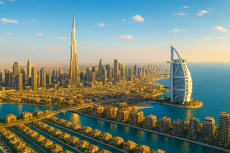




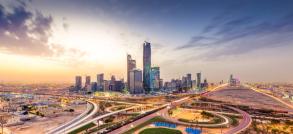
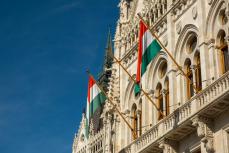
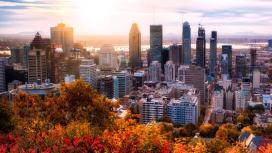
Recently Published

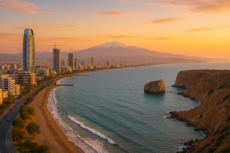







Book a free consultation


